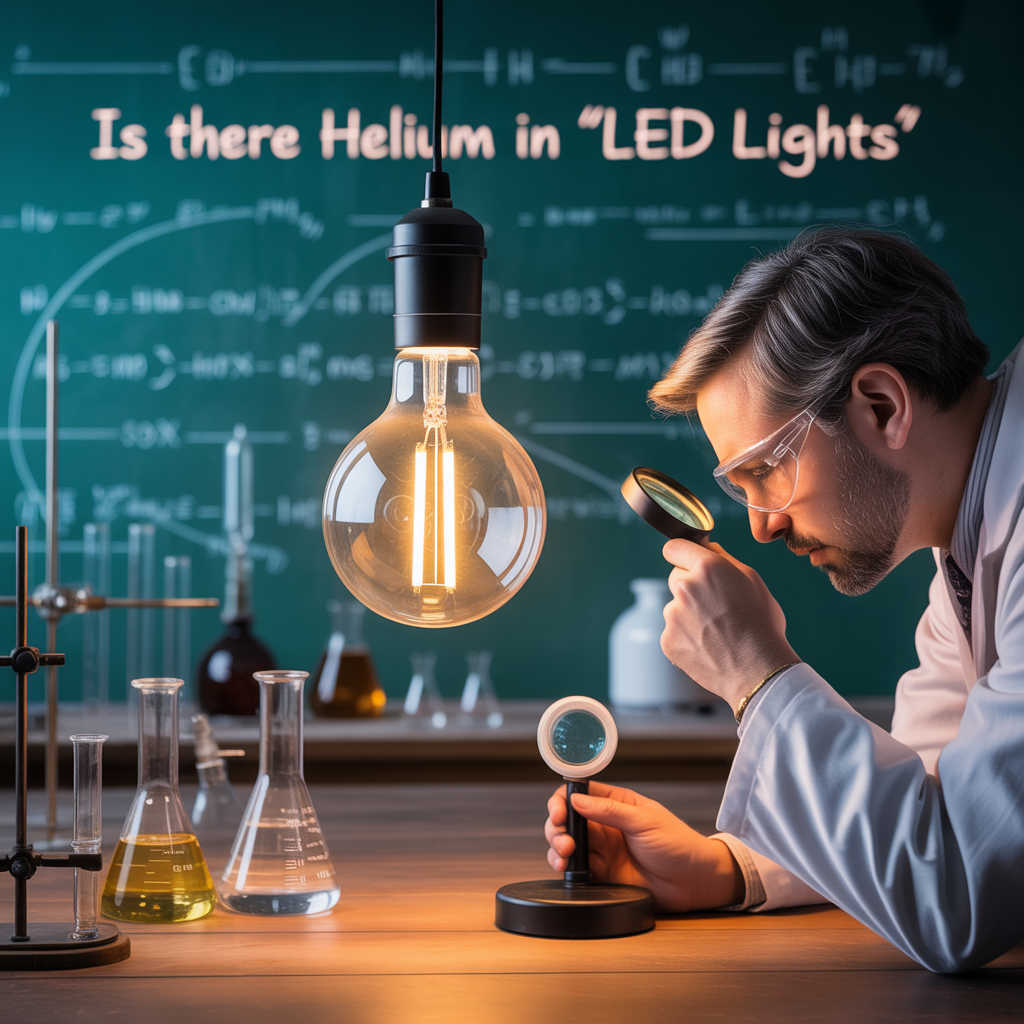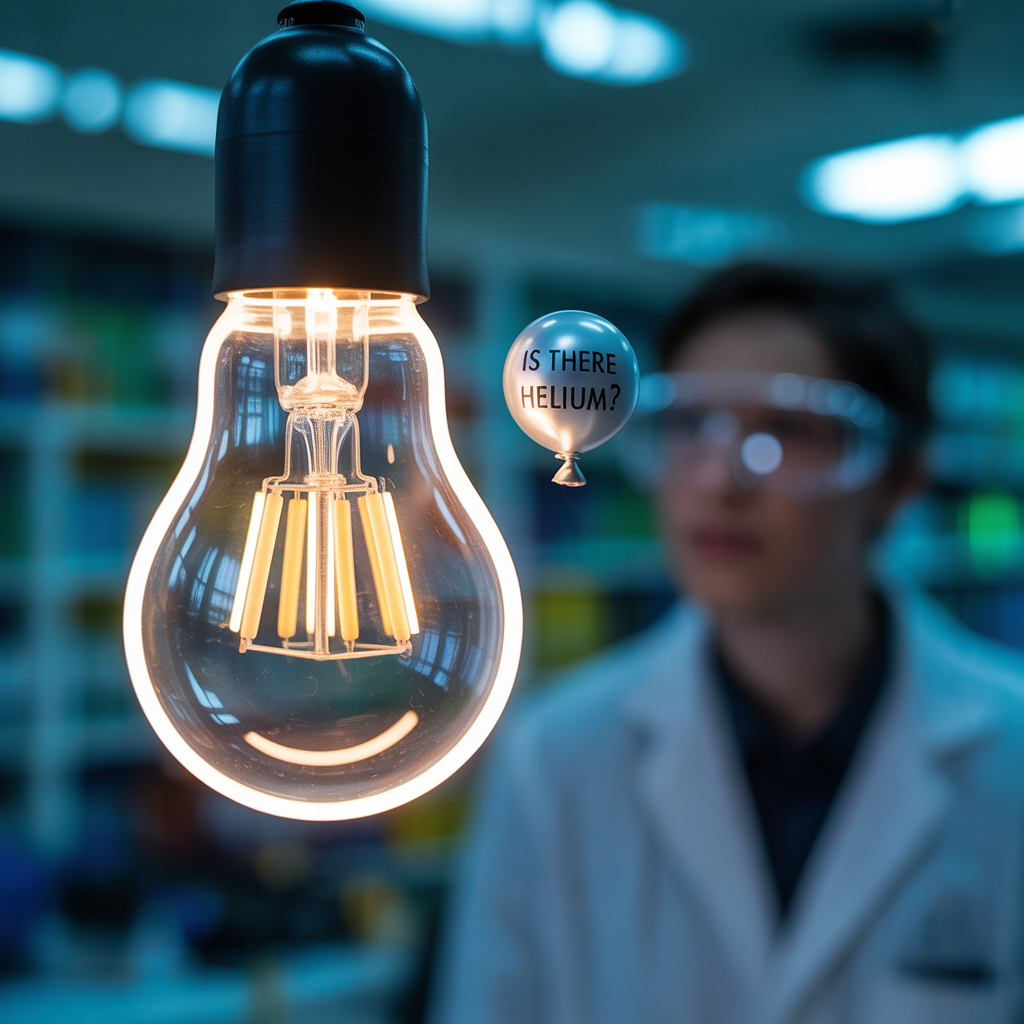Is Their Helium in LED Lights? [A Scientific Answer]
Is their helium in LED lights? No, there is no helium in LED lights. LEDs (Light Emitting Diodes) work using semiconductors, not gas. Unlike traditional gas-discharge lamps, LED lights produce light through electroluminescence and do not require any inert gases like helium or argon. Light Emitting Diodes (LEDs) are semiconductor devices that convert electrical energy…
Is their helium in LED lights? No, there is no helium in LED lights. LEDs (Light Emitting Diodes) work using semiconductors, not gas. Unlike traditional gas-discharge lamps, LED lights produce light through electroluminescence and do not require any inert gases like helium or argon.
Light Emitting Diodes (LEDs) are semiconductor devices that convert electrical energy into light. Unlike incandescent bulbs that rely on heating a filament, LEDs utilize a process called electroluminescence. When an electrical current passes through a semiconductor material (usually a combination of gallium, nitrogen, phosphorus, and indium), electrons recombine with holes, releasing energy in the form of photons – light particles. The color of the light depends on the specific semiconductor material used.
Is Their Helium in LED Lights?

LED lights do not contain helium. They function using solid-state technology, where light is produced by passing electricity through a semiconductor. Unlike older lighting types such as fluorescent or neon lamps, LEDs do not rely on gases like helium for illumination, making them more efficient and durable. Keep reading for more information.
Read More: How to Solder USB Connector to LED Light? Exact Answer & Guideline
The Gases Used (or Not Used) in LED Lighting
Inert Gases in Lighting: A Brief History
Historically, various inert gases, such as argon, neon, and krypton, have been used in different types of lighting technologies. For example, neon signs use neon gas, while incandescent bulbs often contain argon to reduce filament evaporation. However, these gases play a very different role than what’s often misconceived in the context of LEDs.
Why Helium Isn’t Used in LEDs
Helium is an inert gas known for its low density and non-reactivity. While it might seem like a plausible gas to include in a lighting solution, it doesn’t offer any significant advantages for LEDs. The key function of the gases found in some types of lighting is primarily to protect the filament or the semiconductor material from oxidation and degradation. In LEDs, the semiconductor junction is encapsulated in a protective resin or plastic casing that serves this purpose, eliminating the need for helium.
Read More: 12 Excellent Half Vaulted Ceiling Lighting Ideas
The Construction of an LED Bulb

Internal Components and Materials
A typical LED bulb consists of several key components: an LED chip (the light-emitting part), a heat sink (to dissipate heat), a driver circuit (to regulate the current), and a protective casing. The casing is usually made of plastic or glass and seals the internal components, protecting them from moisture, dust, and other environmental factors. The casing does not contain helium or other inert gases.
Debunking the Helium Myth
Common Misconceptions and Their Origins
The misconception that helium is used in LEDs may have arisen from a conflation with other lighting technologies or a misunderstanding of the properties of inert gases. The association might stem from the use of inert gases in other lighting types, or from the general knowledge that helium is light and non-reactive.
The Role of Other Gases in Related Technologies
Other Lighting Technologies and Their Gas Fillings
To better understand why helium isn’t used in LEDs, it’s helpful to compare them to other lighting technologies. Fluorescent lights, for instance, typically contain a mixture of argon and mercury vapor. The mercury vapor emits ultraviolet radiation, which then excites a phosphor coating on the inside of the tube to produce visible light. Argon is used as a buffer gas to optimize the discharge.
Read More: 15 Creative Exposed Ceiling Lighting Ideas | Don’t Miss
Environmental Considerations of LED Lighting
Energy Efficiency and Sustainability
LEDs are lauded for their energy efficiency and long lifespan, significantly reducing energy consumption compared to traditional incandescent bulbs. Their efficiency translates to lower greenhouse gas emissions and a smaller carbon footprint, contributing to a more sustainable future.
Comparing LED Lights to Other Lighting Options
Incandescent, Fluorescent, and LED: A Comparison
LEDs offer several advantages over other lighting technologies. Incandescent bulbs are inefficient and generate a lot of heat, while fluorescent bulbs contain mercury, a hazardous material. LEDs are more energy-efficient, longer-lasting, and environmentally friendly.
The Importance of Proper LED Disposal
Responsible Recycling and Waste Management
While LEDs are environmentally friendly during their operational life, proper disposal is essential. LEDs contain small amounts of various metals. Responsible recycling ensures these materials are recovered and reused, preventing environmental pollution.
LED Lighting and Health Concerns
Blue Light Emission and Potential Effects
LEDs, particularly those emitting higher amounts of blue light, have raised some concerns regarding potential negative effects on human health. Studies are ongoing to fully understand these effects. However, using LEDs with lower blue light emission and practicing good lighting habits can mitigate potential risks.
Advancements in LED Technology
Recent Innovations and Future Trends
LED technology is constantly evolving. Innovations include higher efficiency chips, improved color rendering, and smart lighting capabilities. Future trends may include even greater energy efficiency, integration with IoT devices, and personalized lighting solutions.
Choosing the Right LED Bulbs for Your Needs
Factors to Consider When Purchasing LEDs
When selecting LED bulbs, consider factors such as wattage, color temperature (measured in Kelvin), color rendering index (CRI), and lifespan. These factors will affect the quality, ambiance, and longevity of the lighting in your home or business.
LED Light Applications and Uses
Diverse Applications Across Various Industries
LEDs have become ubiquitous in various applications, ranging from residential lighting to commercial spaces, automotive lighting, and even medical devices. Their versatility, efficiency, and long lifespan make them ideal for a wide range of uses.
Troubleshooting Common LED Lighting Issues
Addressing Problems and Finding Solutions
Sometimes LED lights may malfunction. Common issues include flickering, dimming, or complete failure. Troubleshooting steps involve checking connections, replacing faulty bulbs, and ensuring the driver circuit is functioning correctly.
The Future of LED Lighting
Technological Advancements and Predictions
The future of LED lighting appears bright. Ongoing research and development promise even more efficient, longer-lasting, and versatile LEDs, further transforming the way we illuminate our world.
Frequently Asked Questions
What are the main components of an LED bulb?
An LED bulb typically contains an LED chip, a heat sink, a driver circuit, and a protective casing.
Are there any health risks associated with LED lighting?
Some concerns exist about the potential effects of blue light emitted by LEDs. However, responsible use and selecting bulbs with lower blue light output can mitigate potential risks.
How long do LED bulbs typically last?
LED bulbs have a significantly longer lifespan than incandescent or fluorescent bulbs, typically lasting for 25,000 hours or more.
How are LEDs more environmentally friendly than other lighting options?
LEDs are energy-efficient, reducing energy consumption and greenhouse gas emissions. They also do not contain hazardous materials like mercury found in fluorescent bulbs.
Are LEDs suitable for all lighting applications?
Due to their versatility, LEDs are suitable for a vast range of applications, from residential lighting to industrial settings.
How can I dispose of old LED bulbs responsibly?
Check with your local recycling center for information on proper disposal of LED bulbs. They often have specific programs for handling electronic waste, ensuring responsible recycling.
Final Thoughts
The question “Is their helium in LED lights?” is easily answered: No. Helium plays no role in the operation or construction of LEDs. This comprehensive guide has clarified the science behind LED lighting, dispelled common misconceptions, and highlighted the advantages of this energy-efficient technology. Understanding the workings of LEDs allows us to appreciate their impact on energy conservation and environmental sustainability. As LED technology continues to advance, we can expect even more innovative and efficient lighting solutions in the years to come. Embrace the future of lighting—it’s bright!

